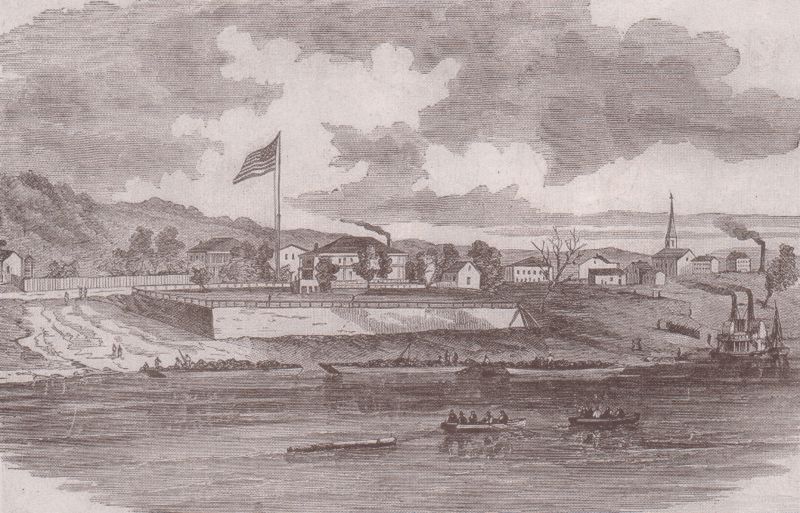
Newport
Barracks
The city of Newport was established in
1795 by James Taylor Jr. Newport was named after Admiral
Christopher Newport. The land had actually been surveyed
twenty years prior by his brother Hubbard Taylor, who at the time
was surveying it for his father Col. James Taylor Sr.
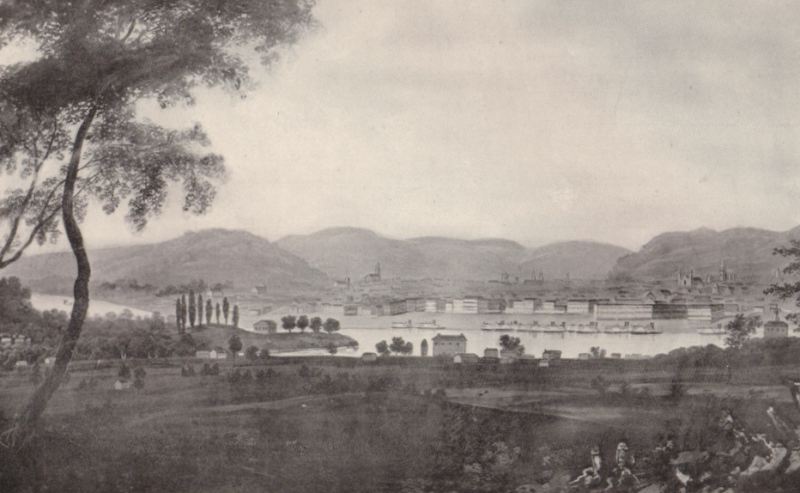 In 1803, James Taylor Jr. requested the
help of his cousin James Madison, who at the time was U.S.
secretary of state to persuade the federal government to move the
Ft. Washington military post from Cincinnati to Newport. The
barracks would then replace Fort Washington across the river in
Cincinnati Ohio. There were around 4 acres in the original
tract, which was bought from the old Colonel Taylor estate for the
minimal price if $1. In 1806, two additional acres were bought for
$47. Taylor was hired as the superintendent of the
construction of the barracks. He was to erect three buildings. John
Metcalf of Fleming County and Dan Mayo of Newport contracted for
the brick and stone work at $7 per thousand bricks and 75 cents per
perch of stone. Stephen Lyon did most of the carpentry and Amos B
Watson of New York was the joiner.
In 1803, James Taylor Jr. requested the
help of his cousin James Madison, who at the time was U.S.
secretary of state to persuade the federal government to move the
Ft. Washington military post from Cincinnati to Newport. The
barracks would then replace Fort Washington across the river in
Cincinnati Ohio. There were around 4 acres in the original
tract, which was bought from the old Colonel Taylor estate for the
minimal price if $1. In 1806, two additional acres were bought for
$47. Taylor was hired as the superintendent of the
construction of the barracks. He was to erect three buildings. John
Metcalf of Fleming County and Dan Mayo of Newport contracted for
the brick and stone work at $7 per thousand bricks and 75 cents per
perch of stone. Stephen Lyon did most of the carpentry and Amos B
Watson of New York was the joiner.
Colonel William
Boyd arrived in Newport in March 1811 with 600 men who pitched
their tents in the fields adjacent to the Barracks. Newport had
become the recruiting center for Ohio and Kentucky and had to
furnish equipment and soldiers for the newly acquired Louisiana
Territory. Soon after this came the War of
1812, and the barracks was called upon to furnish her share
of soldiers to go to the front in the second war with Great
Britain. Gen. James Taylor Jr. was Quartermaster General and
paymaster of the Northwestern Army during this war, thus Newport
became a vital center for war supplies. British prisoners were also
brought to Newport.

In 1842 Taylor asked the government for
$20,000 to make improvements at the Barracks. After 35 years of use
they were in need of repair. Not only was it approved but Captain J
R Irwin of the Quartermaster Department who was sent to Newport to
hasten the undertakings, requested money to purchase some
additional land, erect officers and laundress quarters and build a
hospital. On 7 January 1845 Irwin informed General Thomas
Sidney Jesup that the new hospital was ready for patients, the
enlisted men were in their barracks and two sets of officers
quarters needed only a stockade to finish them.
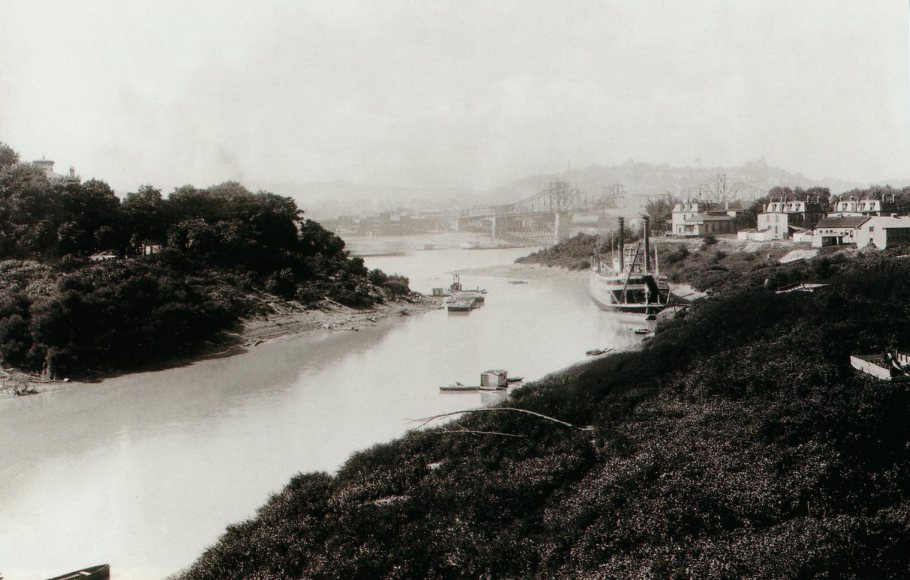
In 1848 the city of Newport gave to the
government all the land lying between the barracks and the
Ohio and Licking Rivers. These
waterfronts included several acres and were given free to the
government, with the stipulation that in case the barracks was ever
abandoned the property would revert to the city.
Newport Barracks became a depot of the
Eastern Department of the Recruiting Service until 16 Jul 1859 when
it was made an independent department. During the Civil War, although Kentucky was a slave state and
families divided over the issues of states rights and abolition.
Wounded and dying from the war were brought to Newport as well as
Confederate prisoners. It is also said that Jefferson Davis,
General Robert E. Lee and Union General Ulysses S. Grant did tours
of duty at the Newport Barracks.
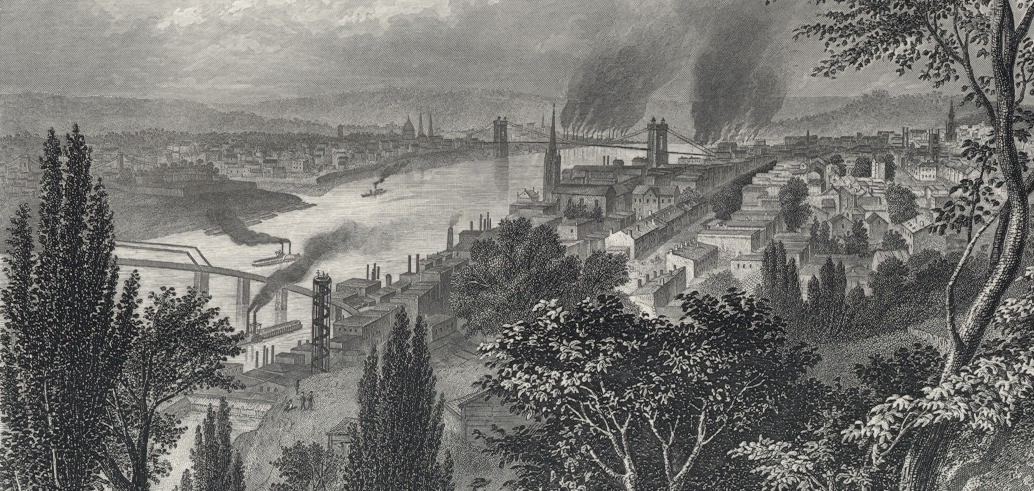
Picture taken from Eden Park around 1872 with Cincinnati on the
right and the Barracks and Covington on the left across the
river.
After the Civil War ended, the Barracks
lost their usefulness as one company posts were giving way to
larger installations. Its days were certainly numbered after the
floods of 1882, 1883 and 1884. The floods made some of the
buildings uninhabitable. The Secretary of War purchased
112 acres on a hill above the Ohio River three miles east of
Newport which became Ft. Thomas. By November 1894 all personnel and
equipment was transferred out to Fort Thomas. On the 2nd of January
1895, Colonel Cochran formerly transferred Newport Barracks to the
City of Newport. The city eventually built General James Taylor
Park on the grounds.

Newport Barracks in the flood of 1884
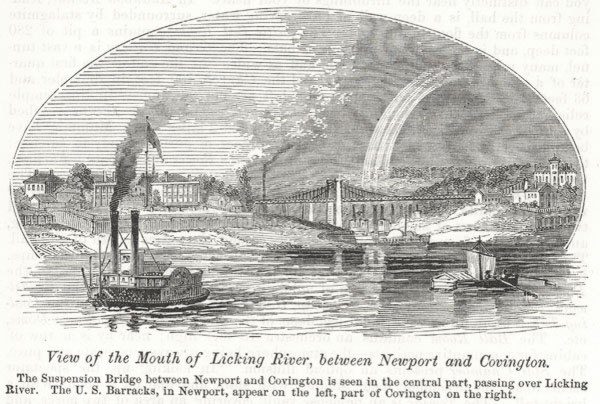
History on James Taylor Jr. and Newport, KY
James Taylor, Jr. (1769–1848) was an American banker,
Quartermaster general, and one of the wealthiest early settlers of
Kentucky. He was a founder of the city of Newport, Kentucky.
He was the fifth child born to James Taylor Sr. and his wife,
Anne Hubbard Taylor in Midway Virgina. His father, James Taylor
Sr., bought 2,700 acres of land in Northern Kentucky
from his friend George Muse, which was part of the land Muse had
been awarded for his military service in the French and Indian
Wars.
The Taylor family had two cousins, James Madison and Zachary
Taylor, who later become presidents of the United States.
On April 1, 1792, just short of his 23rd birthday, James Taylor
Jr. left his father's plantation for Kentucky accompanied by three
slaves, Moses, Humphrey and Adam, along with an English Army
deserter, Robert Christy, and Christy's wife and their three
children. They reached Newport June 20 but couldn't find lodging so
he stayed at Ft. Washington in Cincinnati. His enslaved men worked
through the summer to clear 16 acres in fields along the
Licking, plant two corn crops and build a small cabin on lot no. 6
at the southwest corner of Second Street and Central Avenue. He
became the driving force behind the settlement's development. He
laid out the first road to Lexington in August with Jacob and
Edward Fowler.
In 1794 James Taylor tapped his connections with Kentucky's
leaders to lobby at Frankfort for acts incorporating Newport and
creating Campbell County, Kentucky. The legislature established the
county on December 17, 1794 from parts of Mason, Scott and Harrison
Counties. On December 14, 1795 it approved Newport's charter.
James Taylor jr. and Keturah Moss Leitch were married on
November 15, 1795. James and Keturah Taylor had 11 children, but
only four survived to maturity.
During a storied lifetime, James Taylor Jr. operated ferries
across both the Ohio and Licking rivers, helped to found banks,
invested in the mammoth Newport Manufacturing Co., operated saw and
grist mills along the Licking River, was part owner of a salt-works
at Grants Lick, Ky., ran a tanning business and in his spare time
was known to collect fossils and hunt buffalo at Big Bone Lick in
Boone County.
James Taylor Jr. and his wife were laid to rest at the Taylor
Family Plot Evergreen Cemetery, Southgate, Ky. At his death, James
Taylor Jr. was said to be one of the wealthiest men in the state of
Kentucky, with an estate valued at more than $4 million.
In the mid 1800s, Newport became a hub for trade, industry and
culture. Just a few years later, Gen. Taylor's grandson established
the wealthy area of East Row, a collection of elegant homes. Today,
the East Row local Historic District is the second largest local
district in Kentucky and the Taylor Mansion is the district's
oldest house.
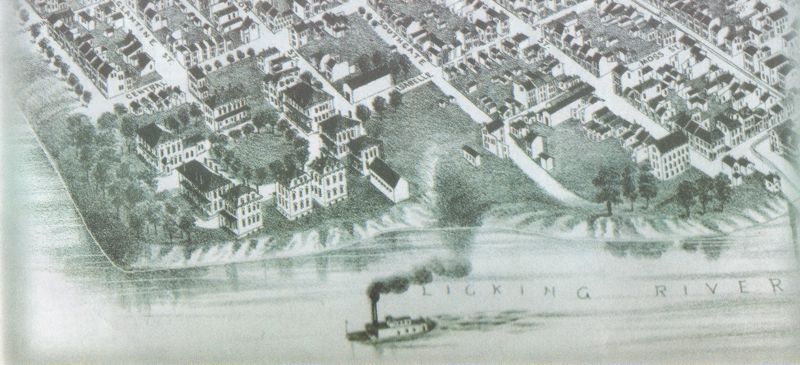
The Newport Barracks
sources:
Wikipedia
Newport Barracks
Wikipedia
James Taylor Jr.
NKY Views
Newport Barracks